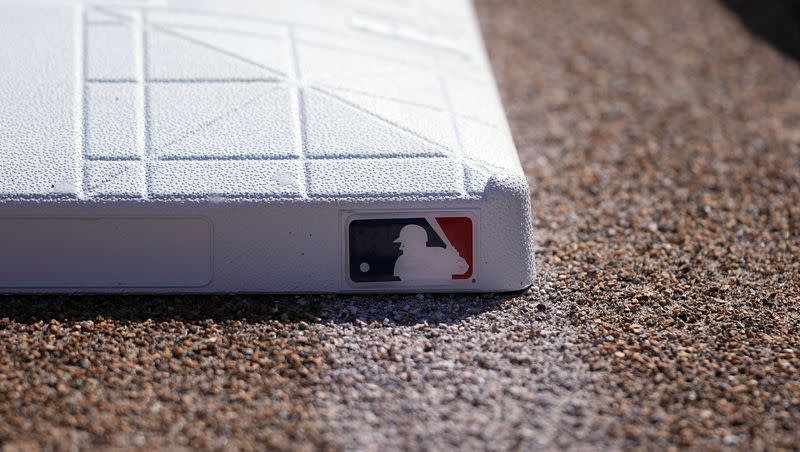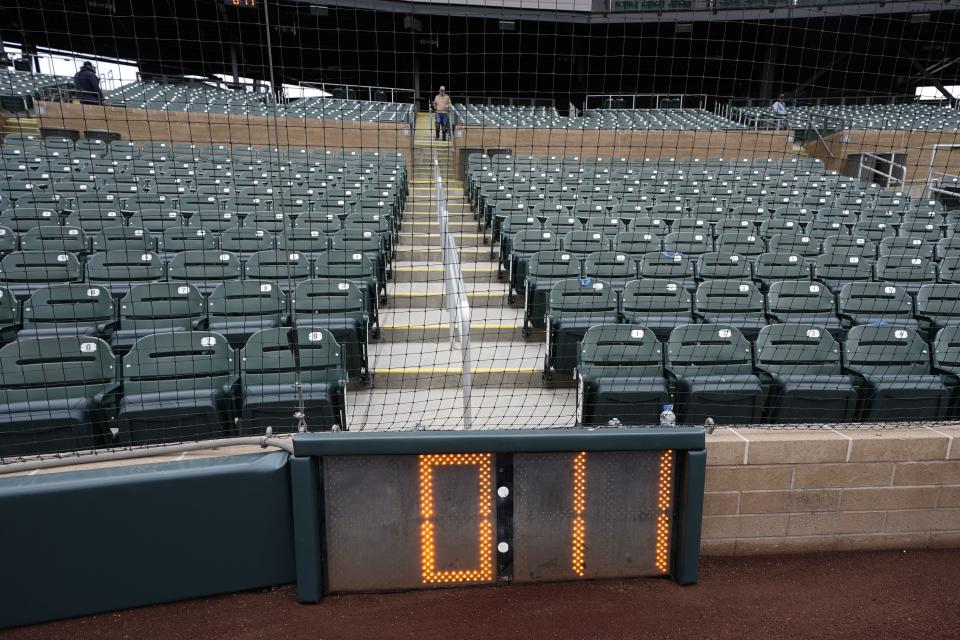Hate baseball? Here’s why you should give the MLB another chance this year

Baseball lovers rejoice. A new season is here.
Major League Baseball’s 2023 season is kicking off Thursday in a big way, with all 30 teams taking the field on opening day for the first time since 1968.
If you’re not a baseball fan, you may greet that news with a yawn. But I’ve got three reasons why 2023 could be the year the MLB wins your love — and all three stem from major changes to the rules of the game.
Games will be shorter (because of a new pitch timer).
Steals will be more common (because of bigger bases).
There will be more base hits (because of a new rule governing where infielders can stand).
These changes to the game grow from league officials’ sense that professional baseball needed to be more fun. They wanted to rediscover the entertainment value of baseball games from the past.
“I think fans are going to get today’s athletes, which are the best that have ever played the game, playing the game with the pace and rhythm that existed in the 1970s and ’80s ... which to me is going to produce a form of this sport that no one has ever seen before,” said MLB executive vice president of baseball operations Morgan Sword, during a preview of the new rules for reporters, according to MLB.com.
Here’s a deeper look at the three most notable new rules coming to a professional baseball game near you this season:
Baseball bases will be bigger
Starting in the 2023 season, MLB bases will measure 18 inches on each side instead of 15 inches. The size change is meant to “reduce injuries around them while increasing stolen base attempts,” ESPN reported.
During a trial run in the minor leagues, bigger bases did indeed boost player safety, but they only had a minor effect on the steal success rate, according to MLB.com.
“There was a 13% decline in injuries near the bases in the minorlLeagues last year,” the article noted. Meanwhile, “the success rate on steal attempts in the minors with the bigger bases increased between 1 and 2%.”
At the very least, the bigger bases should tempt teams to make more steal attempts, Jayson Stark argued in a column for The Athletic.
MLB’s new bigger base size pic.twitter.com/44uZ95GpZW
— Jack Harris (@Jack_A_Harris) February 14, 2023
Pitchers (and batters) will be on a timer
To speed up the game, MLB leaders approved the use of timers in between at-bats and in between pitches. “There will be a 30-second timer between batters and then a 15-second timer between each pitch with the bases empty and a 20-second timer between each pitch with runners on base,” MLB.com reported.
If the batter isn’t in the batter’s box by the 8-second mark, he’ll get an automatic strike, the article noted. If the pitcher isn’t yet in motion when the timer goes off, the batter will be awarded a ball.
“The pitch timer reduced the average game time in the minor leagues last year by 25 minutes,” MLB.com reported.
In anticipation of this new rule, ballparks have been outfitted with multiple pitch clocks. The umpires and pitchers all need a clear view of the countdown in order for the process to work and be fair.
The new pitch timers will likely make the game more enjoyable for fans, but they could be a major headache for some pitchers, according to Stark. He noted that relievers, in particular, often move at a slow pace.
“Their first challenge is they’re going to have to pick up that glacial pace,” he wrote, adding that the second challenge will be to keep delivering great pitches without having as much recovery time between throws.

Infielders will need to respect shift restrictions
The third major rule change coming to Major League Baseball in 2023 deals with the position of infielders. Moving forward, infielders won’t have as much freedom to shift their position in response to which batter is at the plate. Instead, they’ll always have to be on the infield dirt (or grass) when a pitch is thrown and evenly balanced on either side of second base (two on each side), ESPN reported.
“Players will be able to move as soon as the ball leaves the pitcher’s hand,” the article said.
The rule change is aimed at improving leaguewide batting averages, according to ESPN. Left-handed hitters, in particular, should benefit from the new approach.
“It would be hard to find a hitter — especially a left-handed one — who isn’t on board with eliminating the shift,” the article said.
As with the pitch clock, failure to abide by the new rule could cost the offending team. If illegal positioning results in an outcome that the batting team is unhappy with (like an out), they can choose to accept the penalty and see a ball added to the count.
Outfielders will still be allowed to shift their positions, according to MLB.com.

